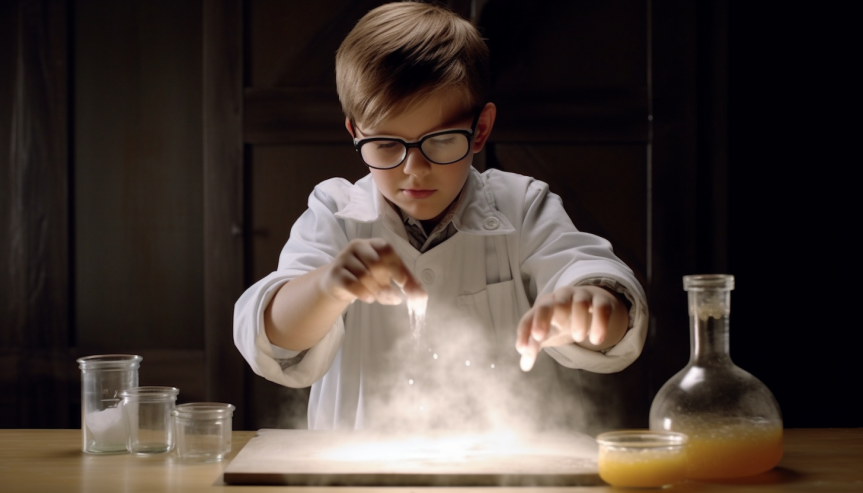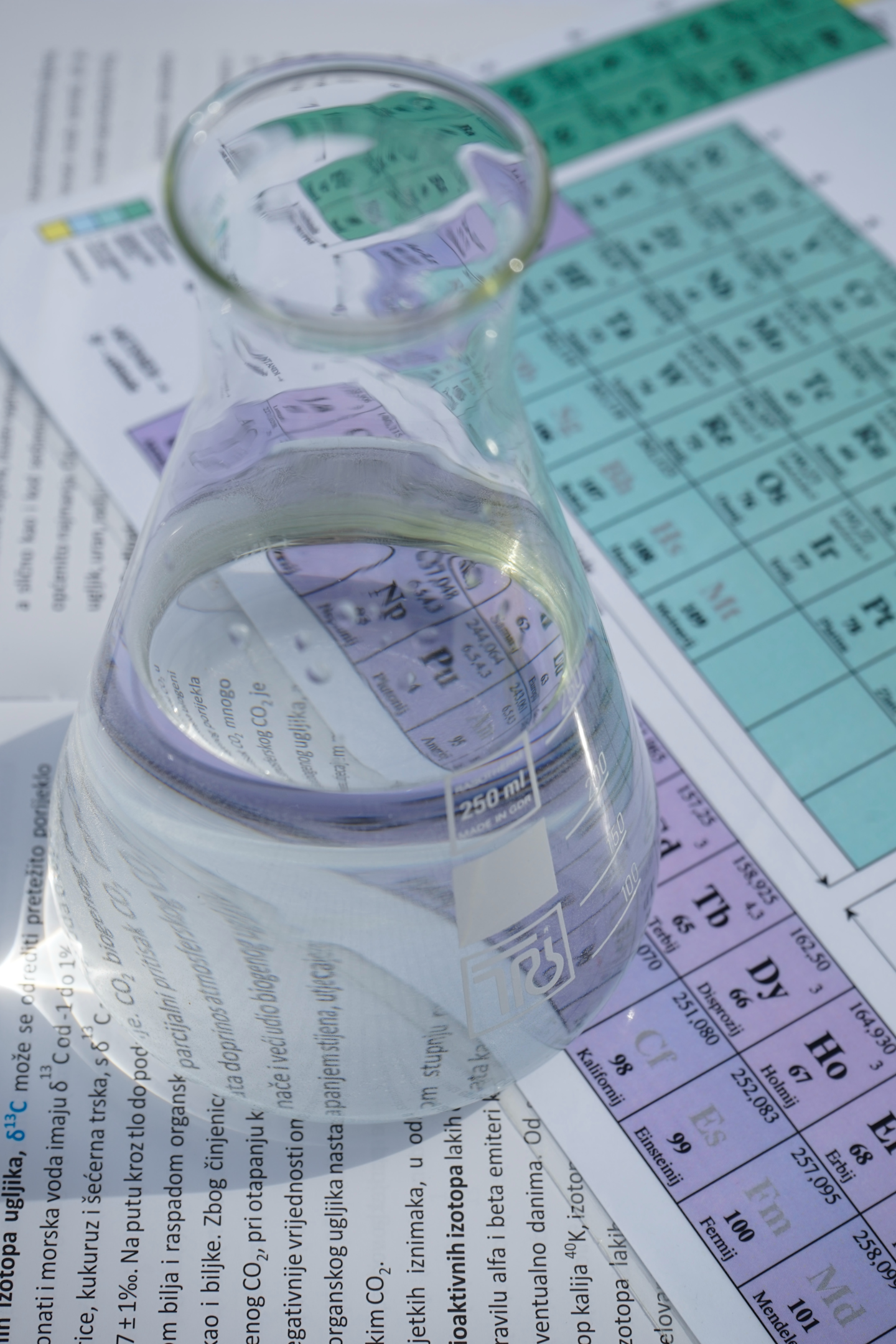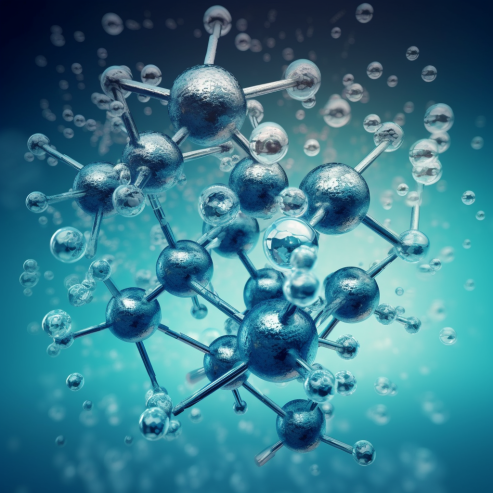101 Amazing Chemistry Facts You Have to Know
Welcome to the fascinating world of chemistry! This mind-blowing realm of science has captivated us for centuries, and it’s no surprise why: from the creation of the cosmos to the intricate processes occurring within our own bodies, chemistry is everywhere.

Welcome to the fascinating world of chemistry! This mind-blowing realm of science has captivated us for centuries, and it’s no surprise why: from the creation of the cosmos to the intricate processes occurring within our own bodies, chemistry is everywhere. Are you ready to embark on a thrilling adventure through the realm of chemistry, filled with amazing chemistry facts, incredible discoveries, and mind-blowing phenomena? Let’s dive in and explore the marvelous world of chemistry, and uncover the secrets that lie within its microcosmic wonders.
Throughout this blog post, we will delve into the captivating realm of chemical reactions, elements, and compounds. We will learn about the role of chemistry in everyday life, the wonders of water, and the fascinating processes that occur in the cosmos. As we explore the intricacies of the human body and its connection to chemistry, we will discover how the natural world is shaped by chemical processes. Get ready to be amazed by the extraordinary world of chemistry facts and its impact on our lives!
Key Takeaways
- Discover amazing chemistry in everyday life, from cooking to cleaning agents and food preservatives!
- Explore the incredible elements & compounds that make up our world, including rare earths and unique compounds.
- Dive into Chemistry in Space with star chemistry or explore it through a subscription box, unlock its mysteries today!
Chemistry in Everyday Life

Did you know that chemistry is deeply intertwined with our everyday lives? From the moment we wake up to the moment we go to bed, we are constantly surrounded by and interacting with a multitude of chemical reactions. These reactions occur in the food we cook, the cleaning agents we use, and even the air we breathe!
The role of chemistry in the world around us is truly fascinating, and understanding it can help us appreciate the intricate and complex processes that govern our existence. We’ll uncover some astounding chemistry facts embedded in our day-to-day activities.
Cooking Chemistry
Cooking is a delightful dance of chemistry, where ingredients come together to create complex flavors, textures, and aromas. The chemical processes involved in cooking can transform and enhance the taste of food, making it more delicious and appealing. For example, during the Maillard reaction, amino acids and sugars react under heat to produce a rich, savory flavor and a delightful brown crust on the surface of your favorite roasted or baked dishes.
And have you ever wondered why peppers are spicy or why onions make you cry? It’s all due to the presence of unique chemical compounds, like capsaicin in peppers and syn-propanethial-S-oxide in onions, which interact with our taste buds and sensory nerves.
So, when you’re cooking up your next meal, bear in mind the remarkable chemistry that makes your culinary masterpieces possible!
Cleaning Agents
Cleaning agents are an essential part of our daily lives, helping us keep our homes and belongings clean and germ-free. But have you ever wondered how these products actually work? The secret lies in their chemical makeup, which allows them to dissolve and remove dirt, stains, and grease.
For example, soaps and detergents contain molecules called surfactants, which have water-loving (hydrophilic) heads and oil-loving (hydrophobic) tails. These amazing molecules surround and lift away dirt and oil, allowing them to be washed away with water.
Other cleaning agents, like bleach and ammonia, act as powerful disinfectants, killing bacteria and viruses on surfaces. When you’re tackling your next cleaning task, pause to marvel at the intriguing chemistry that enables these products to work so efficiently.
Food Preservatives
In today’s fast-paced world, food preservation plays a crucial role in ensuring the freshness, safety, and longevity of the food we consume. Chemical preservatives are often added to food products to help maintain their quality and prevent spoilage. These incredible substances work by inhibiting the growth of harmful microorganisms, such as bacteria, mold, and fungi, that can cause food to spoil and pose a risk to our health.
Common preservatives include sodium chloride (salt), which creates an inhospitable environment for bacteria, and antioxidants like ascorbic acid (vitamin C), which prevent oxidation and rancidity in fats and oils.
When you select a packaged food item, consider the extraordinary chemistry that contributes to keeping your food safe and fresh.
Elements and Compounds

Our world is made up of a vast array of elements and compounds, which interact and combine in countless ways to create the diverse materials and substances that we encounter every day. From the air we breathe to the food we eat, these chemical building blocks form the foundation of our existence.
In this segment, we’ll dive into the fascinating realm of elements and compounds, investigating rare earth elements, uncommon compounds, and the exciting narratives of various element discoveries.
Embark with us on this fascinating voyage into the core of chemistry, revealing the mysteries of the elements and compounds constituting our world.
Rare Earth Elements
Rare earth elements are a group of 17 remarkable chemical elements that possess unique properties and are found in small quantities within the Earth’s crust. These elements, which include scandium, yttrium, and the 15 lanthanides, have become indispensable in modern technology due to their extraordinary characteristics, such as high melting points, low electrical conductivity, and strong magnetic properties. They are used in a wide range of applications, from electronics and magnets to catalysts and medical equipment.
Despite their name, rare earth elements are not as scarce as one might think – in fact, some of them are more abundant in the Earth’s crust than gold, platinum, or even the rarest naturally occurring element! The fascinating world of rare earth elements showcases the incredible diversity and potential of chemistry, as these elements play a crucial role in shaping our modern world.
Unique Compounds
In the vast world of chemistry, there exists a collection of unique compounds that stand out due to their unusual properties or the rarity of the elements that compose them. Vanadium oxide, for example, is an intriguing compound that exhibits superconductivity at low temperatures, while steel – an alloy of iron and carbon – is renowned for its incredible strength and versatility. Iron oxide, on the other hand, is known for its distinct reddish-brown color and magnetic properties, which can be attributed to the presence of iron oxide particles.
Another fascinating compound is graphene, a one-atom-thick sheet of pure carbon atoms arranged in a hexagonal lattice, which boasts exceptional strength, flexibility, and electrical conductivity. These extraordinary compounds not only highlight the endless possibilities of chemistry, such as the interaction with hydrogen atoms, but also have the potential to revolutionize various industries, from materials science and electronics to medicine and renewable energy.
The world of unique compounds is truly a testament to the power and potential of chemistry in shaping our lives.
Element Discoveries
The history of element discoveries is a tale of human curiosity, ingenuity, and perseverance. From ancient alchemists who first isolated elements like gold and silver, to modern-day scientists who have synthesized superheavy elements like oganesson, the quest to uncover the building blocks of the universe has been a thrilling journey filled with surprises and breakthroughs.
One such example is the discovery of helium, an element that was first observed in the Sun’s spectrum before it was found on Earth in the form of liquid helium. The stories behind the discovery of various elements not only provide a glimpse into the evolution of our understanding of chemistry, but also serve as a testament to the indomitable spirit of human inquiry and the relentless pursuit of knowledge.
As we continue to explore the depths of chemistry, who knows what new elements and discoveries await us in the future?
Chemical Reactions

The world of chemical reactions is a mesmerizing and dynamic realm, where atoms and molecules dance and collide, forming and breaking bonds in a perpetual cycle of transformation. These processes are responsible for the countless phenomena we observe in the universe, from the fiery explosions of stars to the vibrant colors of a rainbow.
In this segment, we’ll venture into the fascinating realm of chemical reactions, investigating explosive, colourful, and common reactions that mould our lives and the world we inhabit. Fasten your seatbelt and prepare for a thrilling journey through the enthralling world of chemical reactions!
Colorful Reactions
The chemistry behind colorful reactions is both fascinating and visually stunning, revealing the vibrant and diverse palette of the chemical world. These reactions occur when molecules absorb and reflect specific wavelengths of light, resulting in the display of various colors. Some well-known examples of colorful reactions include the Briggs-Rauscher reaction, which produces a mesmerizing oscillation of color changes, and the Rainbow Flame Test, which uses the distinct colors of flames produced by different metal ions to identify their presence in a sample.
Colorful reactions also play a vital role in nature, as seen in the dazzling hues of autumn leaves and the iridescent shimmer of butterfly wings. By exploring the chemistry behind these beautiful reactions, we can gain a deeper appreciation for the rich tapestry of colors that paint our world.
Everyday Reactions
Chemical reactions are an integral part of our everyday lives, shaping the world around us in ways both subtle and profound. Some examples of chemical reactions that occur in our daily lives include:
- The rusting of iron
- The souring of milk
- The burning of wood
- The baking of bread
- The digestion of food
These reactions are constantly at work, transforming and interacting with the substances we encounter daily.
Some everyday reactions include:
- Combustion: occurs when substances like wood or gasoline burn in the presence of oxygen
- Oxidation: responsible for the browning of sliced fruit and the corrosion of metals
- Acid-base reactions: govern processes like digestion and respiration
- Precipitation: involved in the formation of clouds in the sky
- Neutralization: occurs when an acid and a base react to form a salt and water
These reactions govern various processes in our daily lives.
By understanding the chemistry behind these everyday reactions, we can develop a deeper appreciation for the intricate and dynamic processes that govern our world.
The Wonders of Water

Water is truly one of the most remarkable and versatile substances in the universe, with a unique set of properties that set it apart from other chemicals. Some of the wonders of water include:
- Its ability to dissolve a wide array of substances
- Its crucial role in sustaining life
- Its ability to exist in three states (solid, liquid, and gas)
- Its high heat capacity, which helps regulate temperature on Earth
- Its surface tension, which allows insects to walk on water
The wonders of cool liquid water are truly awe-inspiring, much like the properties of liquid air and the unique characteristics of liquid water.
In this segment, we’ll investigate the distinctive properties of water, the significance of hydration and health, and the intriguing processes involved in water treatment. So, grab a glass of cool, invigorating water and accompany us on this exploration into the remarkable world of H2O!
Water's Unique Properties
What makes water so special? The answer lies in its unique properties, which stem from its molecular structure and the hydrogen bonding that occurs between water molecules. Some of these amazing properties include:
- High specific heat capacity, which allows it to absorb and release large amounts of heat without undergoing significant temperature changes
- Ability to expand upon freezing, which is why ice floats on water
- Incredible solvent power, which enables it to dissolve a vast array of substances
These properties not only make water a vital component of our planet’s climate system, but also play a crucial role in supporting life on Earth. The unique properties of water truly showcase the remarkable diversity and potential of chemistry.
Hydration and Health
The importance of hydration and the role of water in maintaining health cannot be overstated. As the primary component of our bodies, water is essential for regulating body temperature, maintaining electrolyte balance, and supporting metabolism.
Proper hydration can help improve physical performance, mental clarity, and overall health. On the other hand, dehydration can lead to fatigue, headaches, dizziness, and confusion, and in extreme cases, can result in organ failure and death.
So, be sure to drink plenty of water throughout the day to stay healthy and hydrated!
Water Treatment
Water treatment is a vital process that ensures the safety and quality of the water we use and consume. The chemistry behind water treatment involves a series of processes, such as:
- Coagulation
- Flocculation
- Sedimentation
- Filtration
- Disinfection
- pH adjustment
These processes work together to remove contaminants, kill harmful microorganisms, and improve the taste and odor of water.
By understanding the chemistry behind these processes, including detecting dissolved substances, we can better appreciate the importance of water treatment in providing safe, clean water for our daily needs.
Fascinating Facts about the Periodic Table
The periodic table is a cornerstone of modern chemistry, providing a concise and organized way to represent the vast array of elements that make up our universe. From ancient alchemists who first isolated elements like gold and silver, to modern-day scientists who have synthesized superheavy elements like oganesson, the quest to uncover the building blocks of the universe has been a thrilling journey filled with surprises and breakthroughs.
In this segment, we’ll explore intriguing facts about the periodic table, including its historical background, element trivia, and peculiar element facts. Fasten your seatbelt and prepare for a thrilling journey through the captivating realm of the periodic table!
Periodic Table History
The history of the periodic table dates back to the early 19th century when Dmitri Mendeleev, a Russian chemist, published the first version of the table, organizing elements based on their atomic mass and properties. He even left gaps for undiscovered elements, predicting their existence based on the patterns observed in the table.
Over time, the periodic table has evolved and been refined as new elements have been discovered, and our understanding of atomic structure has improved.
Today, the periodic table is a fundamental tool in chemistry for organizing and understanding the properties of elements, showcasing the incredible progress we have made in our understanding of the chemical world.
Element Trivia
Element trivia is a fun and engaging way to learn about the elements on the periodic table. Did you know that radon, actinium, and radium are elements that glow in the dark? Did you know that gold, copper and cesium are the only three metals on the periodic table that don’t have a silvery shine? It is quite interesting how such metals exist with different material qualities to others in the same category.
These interesting facts not only provide a glimpse into the diverse properties and characteristics of elements, but also serve as a testament to the endless possibilities of chemistry.
So, the next time you’re looking for a fun and educational activity, why not dive into some element trivia and discover the amazing world of the periodic table?
Unusual Element Facts
Unusual element facts are those that reveal the unexpected and extraordinary properties of elements that are not commonly known or discussed. For example, did you know that chlorine is not only a powerful disinfectant but also an essential nutrient for plants? Or that nitrogen, despite being the most abundant element in Earth’s atmosphere, is relatively inert and unreactive under normal conditions?
As we uncover these fascinating facts, we are reminded of the incredible diversity and potential of chemistry, and the remarkable properties that set these elements apart from the rest. So let your curiosity run wild and discover the intriguing world of unusual element facts!
Chemistry in Nature

Chemistry, including organic chemistry, is an integral part of the natural world, governing the processes and phenomena that shape our environment and the living organisms that inhabit it. From the captivating glow of bioluminescent creatures to the vibrant pigments that color our world, the role of chemistry in nature is both diverse and fascinating.
In this segment, we’ll investigate the chemistry of bioluminescence, photosynthesis, and natural pigments, providing a glimpse into the astounding world of chemistry operating in the natural sphere.
Accompany us on this voyage into the heart of nature, as we reveal the secrets hidden within its chemical essence.
Bioluminescence
Bioluminescence is a truly enchanting phenomenon that occurs in certain living organisms, such as jellyfish, plankton, and deep-sea fish. These creatures produce and emit light through a chemical reaction known as a luciferin-luciferase reaction, in which a molecule called luciferin is oxidized by an enzyme called luciferase, resulting in the release of light.
Bioluminescence serves various purposes in different organisms, including communication, attracting prey, and camouflage. In addition to its mesmerizing beauty, bioluminescence has also found practical applications in medical research, where it is used as a tool to detect and measure the presence of specific molecules in the body.
The captivating world of bioluminescence showcases the incredible power of chemistry to illuminate the mysteries of the natural world.
Photosynthesis
Photosynthesis is the miraculous process by which green plants, algae, and some bacteria convert sunlight, carbon dioxide, and water into glucose and oxygen. This process is the primary way in which energy from the sun is captured and stored in organic compounds, providing the foundation for life on Earth.
Photosynthesis not only produces the oxygen gas that other organisms need to survive, but also serves as the primary source of energy for most living things, as the glucose produced by photosynthesis is used to create energy for the cells of plants and animals. Additionally, this process contributes to the maintenance of the ozone layer.
By understanding the chemistry behind photosynthesis, we can appreciate the vital role this process plays in sustaining life on our planet.
Natural Pigments
Natural pigments are molecules that absorb certain wavelengths of light and reflect others, giving rise to the beautiful colors we see in nature. These pigments can be found in plants, animals, and other organisms, and are responsible for the vivid hues of flowers, the iridescent sheen of butterfly wings, and the brilliant plumage of birds.
Natural pigments have been used by humans for thousands of years, in applications ranging from:
- food coloring
- cosmetics
- art
- textiles
By exploring the chemistry of natural pigments, we can gain a deeper understanding of the rich tapestry of colors that paint our world, and the fascinating processes that give rise to their vibrant beauty.
The Human Body and Chemistry
The average adult human body is a marvel of chemistry, with countless chemical reactions and processes occurring simultaneously to sustain life and maintain our health. From the intricate dance of metabolism that powers our cells to the delicate balance of hormones that regulate our growth and development, the human body is a testament to the incredible power and potential of chemistry.
In this segment, we’ll scrutinize the connection between the human body and chemistry, exploring the role of metabolism, neurotransmitters, and hormones in preserving our health and well-being.
So let’s plunge into the captivating realm of human biochemistry and discover the astounding secrets hidden within our own bodies!
Metabolism
Metabolism is the incredible set of chemical reactions that occur within living organisms to maintain life. It involves:
- The breakdown of food molecules into smaller molecules
- The use of these molecules to produce energy
- The use of energy to power the body’s cells and organs
- The use of energy to build and repair tissues
Metabolism is essential for the functioning and survival of all living organisms.
Metabolism is essential for maintaining homeostasis and supporting various physiological functions in the body, such as regulating body temperature, maintaining fluid balance, and providing energy for physical activity.
By understanding the chemistry behind metabolism, we can appreciate the amazing processes that keep our bodies running smoothly and efficiently.
Neurotransmitters
Neurotransmitters are the remarkable chemical messengers that transmit signals between nerve cells in the brain and the nervous system. They play a crucial role in various physiological processes, including mood regulation, memory, and muscle movement. Some well-known neurotransmitters include serotonin, which is involved in mood regulation, dopamine, which is associated with reward and motivation, and acetylcholine, which is involved in muscle movement and memory.
By exploring the chemistry of neurotransmitters, we can gain a deeper understanding of the complex processes that govern our thoughts, emotions, and behavior, and appreciate the incredible power of these tiny molecules to shape our lives.
Hormones
Hormones are the body’s incredible chemical messengers, produced by endocrine glands and released into the bloodstream to target specific cells or organs. These powerful substances regulate various physiological processes, such as metabolism, growth and development, reproduction, and mood. Some examples of hormones include insulin, which regulates blood sugar levels, adrenaline, which prepares the body for action in response to stress, and melatonin, which helps regulate sleep patterns.
By understanding the chemistry of hormones and their functions in the body, we can appreciate the delicate balance that governs our health and well-being, and marvel at the incredible power of these amazing substances to orchestrate the intricate symphony of life.
Chemistry in Space
Chemistry plays a pivotal role in the cosmos, shaping the composition of stars and the chemical processes that occur in the vast expanses of space. The elements that make up the universe, from hydrogen and helium atoms that fuel the nuclear reactions in stars to the heavier elements forged in the heart of supernovae, are all products of incredible chemical processes that have taken place over billions of years.
In this segment, we’ll delve into the role of chemistry in space, examining the composition of stars and the chemical processes unfolding in the cosmos. So let’s set off on an interstellar trek through the chemical universe, revealing the secrets hidden within the stars!
Star Chemistry
Stars are the cosmic furnaces of the universe, powered by nuclear fusion reactions that convert hydrogen and helium atoms into heavier elements and release vast amounts of energy in the process. The composition of stars is determined by the elements that are created through nuclear fusion, with heavier elements forming in the cores of massive stars and being scattered throughout the cosmos by the explosive force of supernovae.
The energy produced by stars, in the form of light and heat, is essential for the existence of life, as it provides the energy needed to drive the countless chemical reactions that occur within living organisms. By exploring the chemistry of stars and the processes that power them, we can gain a deeper appreciation for the incredible forces that shape the universe and the role of chemistry in the cosmic dance of life and death.
Chemistry subscription box to dive deeper
If you’re keen to delve further into the captivating world of chemistry, a chemistry subscription box could be the ideal answer! These boxes contain materials and instructions for hands-on experiments and activities related to chemistry, allowing you to explore the subject in a fun and engaging way.
By subscribing to a chemistry subscription box, you can gain a deeper understanding of chemistry concepts, while also enjoying the excitement of conducting your own experiments and discovering the wonders of the chemical world firsthand. Some benefits of subscribing to a chemistry subscription box include:
- Creating your own lava lamp
- Building a model of a molecule
- Learning about chemical reactions through hands-on experiments
- Exploring different elements and compounds
- Discovering the practical applications of chemistry in everyday life
A chemistry subscription box offers endless opportunities for learning, fun, and exploration.
So why not treat yourself to a subscription and embark on an exciting journey of discovery through the world of chemistry?
Summary
As we journeyed through the captivating world of chemistry, we’ve explored the role of chemistry in everyday life, the fascinating properties of elements and compounds, the wonders of chemical reactions, and the importance of water in our lives. We’ve delved into the depths of the periodic table, uncovered the secrets of chemistry in nature, and investigated the intricate connections between chemistry and the human body. Our cosmic voyage has taken us from the heart of stars to the vast reaches of space, revealing the incredible power and potential of chemistry to shape the universe and our lives.
The world of chemistry is indeed a marvelous and diverse realm, filled with endless possibilities and wonders waiting to be discovered. As we continue to explore the depths of this fascinating subject, let us remember the words of the great chemist and Nobel laureate, Linus Pauling: “Satisfaction of one’s curiosity is one of the greatest sources of happiness in life.” So, let your curiosity lead you forward, and may the wonders of chemistry continue to inspire and amaze you on your journey through this incredible world.
Frequently Asked Questions
What are 5 facts about chemistry?
Discover amazing chemistry facts that will blow your mind! Did you know that DNA is a flame retardant, Vitamin B12 is the toughest total synthesis, Helium and Hydrogen account for 98% of all matter and water gets bigger when it freezes?
Plus, get ready to be surprised by learning elements can glow, Radium was once used in planes and even in baths, and we’re made of salt!
What are 5 interesting facts about science?
Discover these 5 amazing facts about science and be amazed. Our planet has more trees compared to stars in the solar system, water can boil and freeze at the same time, light takes almost eight minutes to reach from the sun to earth, grasshoppers have ears in their belly, and a cockroach has the ability to live for up to one week without its head!
Did you know that our planet has more trees compared to stars in the solar system? Water can boil and freeze at the same time, and light takes almost eight minutes to reach from the sun to earth. Grasshoppers have ears in their belly, and a cockroach has the ability to live for up to one week without its head!
What are some examples of everyday chemical reactions?
Everyday chemical reactions include combustion, oxidation, acid-base reactions, precipitation, and neutralization - all of which help make up the fascinating chemistry behind our world!
These reactions are essential for life as we know it, and understanding them can help us better understand the world around us.
What is the primary way in which energy from the sun is captured and stored in organic compounds?
Photosynthesis is the primary way in which energy from the sun is captured and stored in organic compounds, allowing plants to convert sunlight into energy!
This process is essential for life on Earth, as it provides the energy for plants to grow and produce oxygen, which is necessary for animals to survive. Without photosynthesis, life on Earth would not exist.
What is the primary component of our bodies, and why is it essential for maintaining homeostasis and supporting various physiological functions?
Water is an essential primary component of our bodies, necessary for maintaining homeostasis and supporting various physiological functions like body temperature regulation, fluid balance, and physical activity energy.
These functions are essential for our health and well-being, and it is important to ensure that we are consuming enough water on a daily basis. Drinking enough water helps to keep our bodies functioning optimally and can help prevent dehydration and other health issues.

